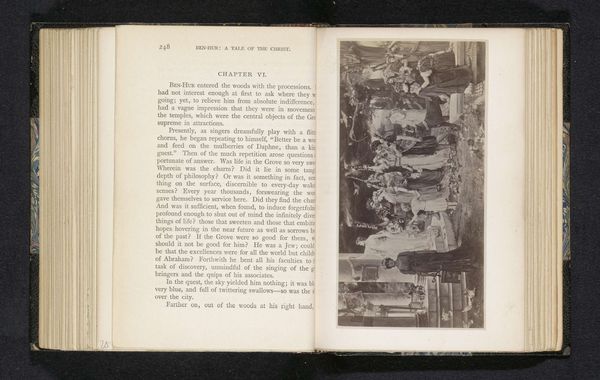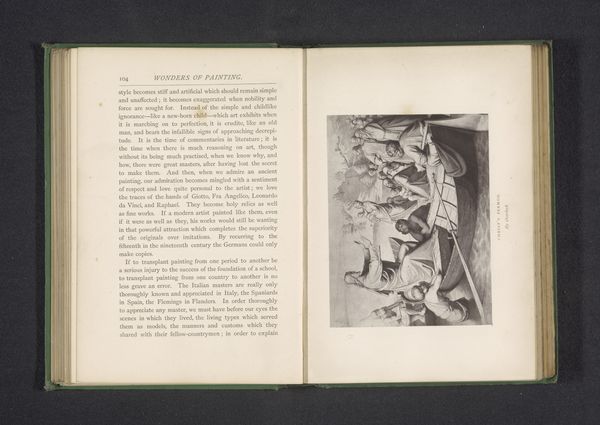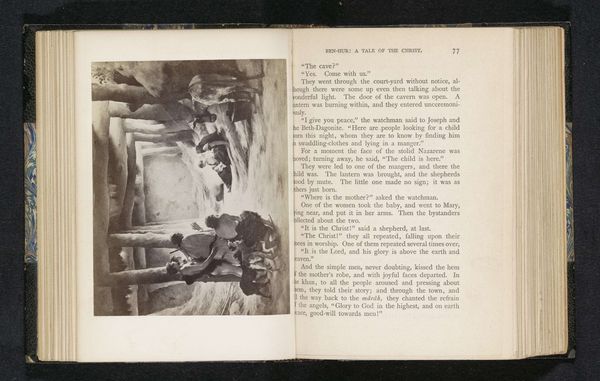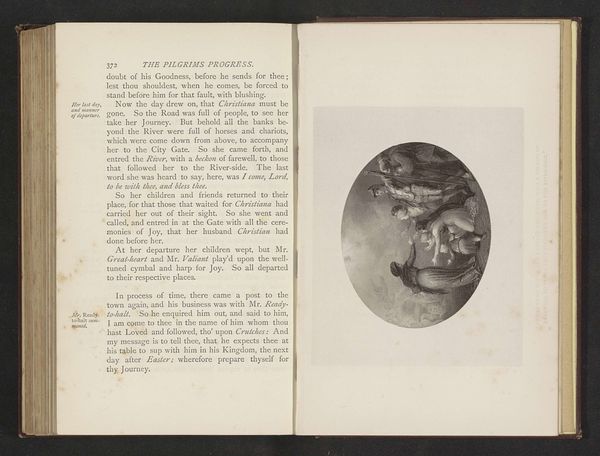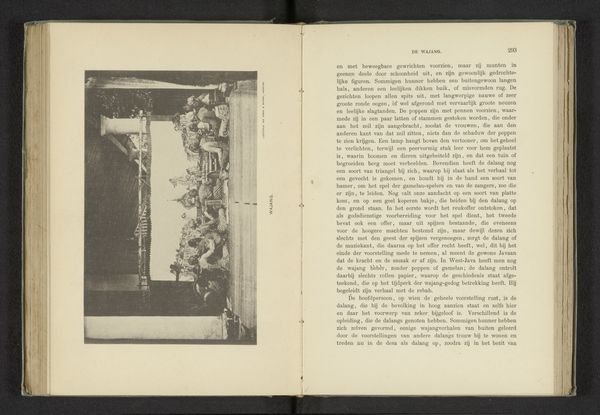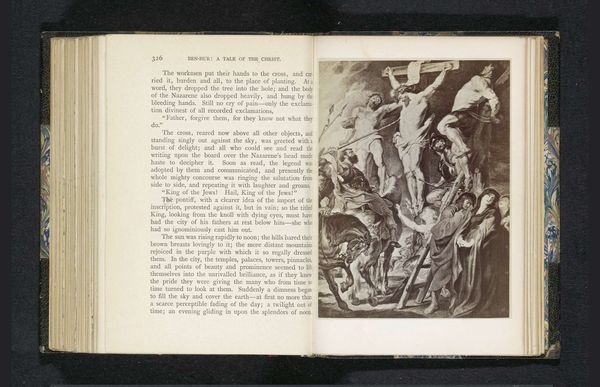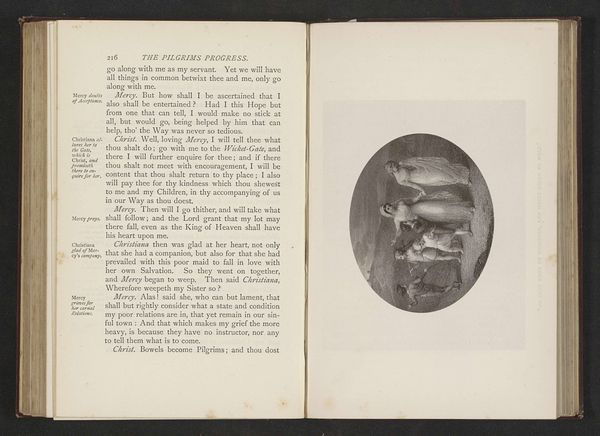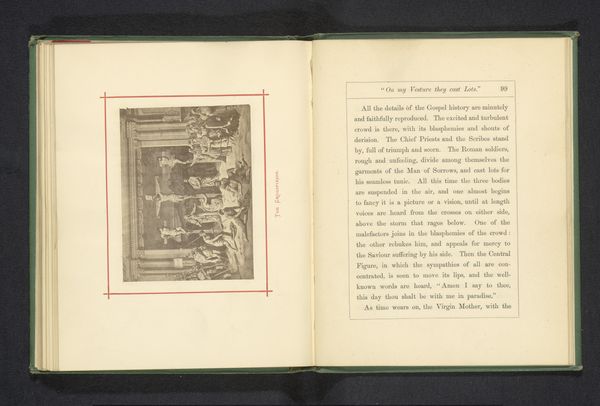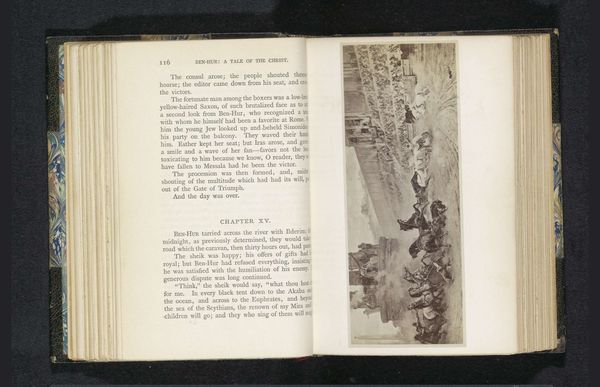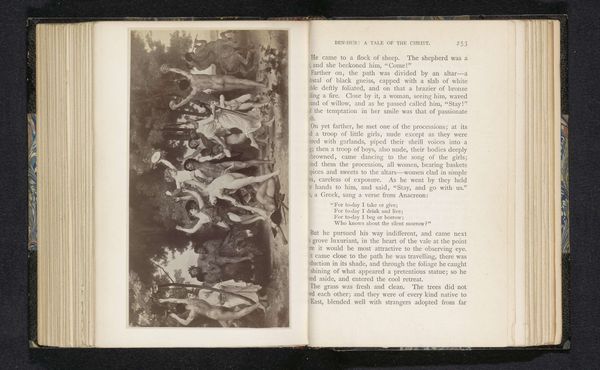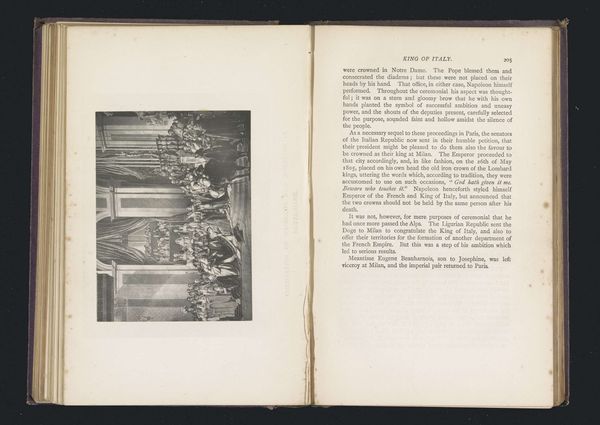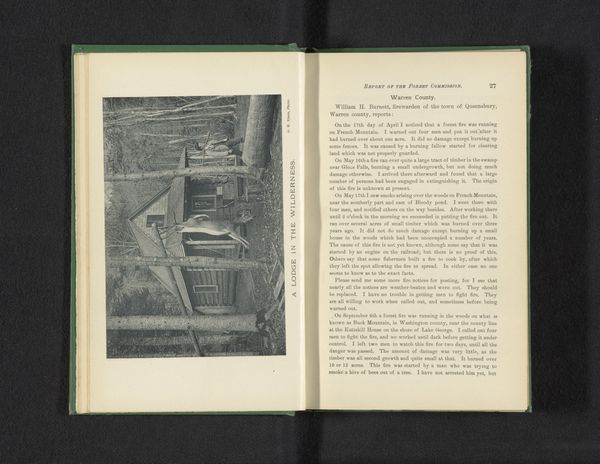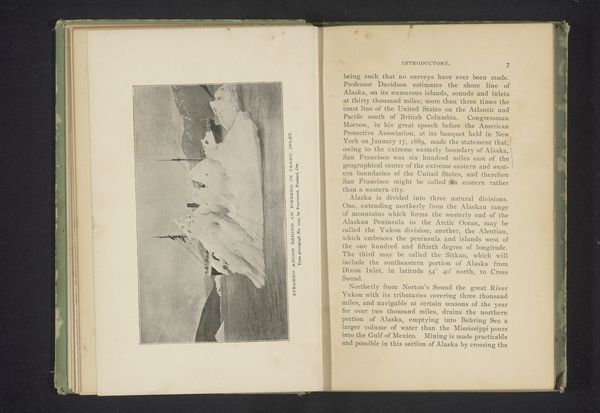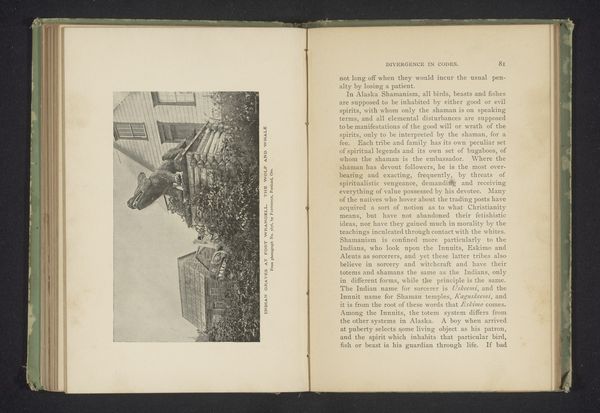
Fotoreproductie van een schilderij, voorstellende Muzen in het heilige bos before 1888
0:00
0:00
print, etching, photography
# print
#
etching
#
landscape
#
photography
#
forest
#
watercolor
Dimensions: height 65 mm, width 146 mm
Copyright: Rijks Museum: Open Domain
Curator: I’m struck by the overall ethereal quality of this image—a kind of dreamscape, would you agree? Editor: Yes, it has that effect. This is a photogravure print called “Fotoreproductie van een schilderij, voorstellende Muzen in het heilige bos”—A Photographic Reproduction of a Painting, Depicting Muses in the Sacred Grove. We attribute it to an anonymous maker, placing its creation before 1888. The Rijksmuseum holds this specific impression. Curator: “Sacred Grove”... Given the way the figures float within the composition, there's almost an archaic pre-Christian feel, perhaps a longing for a classical Arcadia. The photograph flattens the textures and contrasts into starker symbolic contrasts. Editor: Indeed. One might consider the print within the context of late 19th-century visual culture, amidst growing museum culture and expanding image reproduction technologies. It shows the circulation of art beyond its original physical form. How did that reshape perceptions? Curator: Precisely! The democratization of imagery reshapes cultural memory. Each symbol – the muses, the forest itself – takes on new layers with mass consumption, diluting but also broadening interpretations across various social classes. Does this impact their intended gravitas? Editor: That's an excellent question. By transforming this unknown painting into a widely accessible print, was its original symbolic power subverted, or rather amplified? It enters dialogues of artistic exchange. Is this ‘holy’ in any institutional way? Or only emotionally? Curator: Good point, and to extend that: How much is 'lost' versus gained through reproductive technology? On one hand, it loses the unique touch of the artist, its unique aura. But is aura elitist, or culturally vital? On the other hand, photography may underscore key structural relationships in the painting more pointedly for larger audiences. The emotional connectivity to antiquity changes. Editor: Ultimately, this artwork provides insight into both the sacred power that images hold and the social factors dictating its impact on us. Curator: Exactly! And this "reproduction" makes me realize, photography reframes our relationship with art, turning it into a complex dialogue across time and media, memory, and perception.
Comments
No comments
Be the first to comment and join the conversation on the ultimate creative platform.
